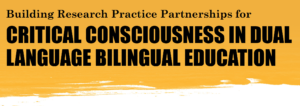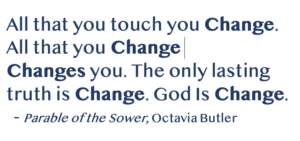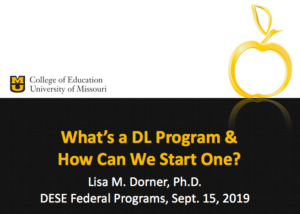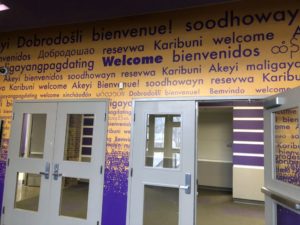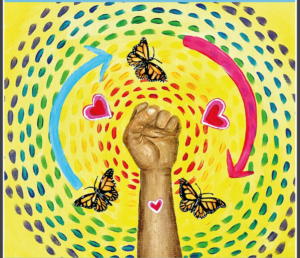
Together with Drs. Deb Palmer, Claudia Cervantes-Soon, Dan Heiman, and Emily Crawford-Rossi — and our amazing cover artist, Martha Samaniego — I am excited to post that our new edited volume has been published! Critical Consciousness in Dual Language Bilingual Education: Case Studies on Policy and Practice (2022) is now available. If you want to see what the book’s about, the introductory chapter is FREE on this page – just click on “Preview PDF” in the upper-right-hand corner! And if you’re interested in buying the book, please use the code AERA2023 at Routledge, for a 30% discount (good til May 31, 2023)!
In our introduction, we noted that this book came to being “amid challenges that feel insurmountable: millions of people from Ukraine, Ethiopia, and Yemen fleeing their homes due to unprovoked and civil wars; countless Central Americans pleading for asylum in the United States; and an on-going pandemic disproportionately killing people of color. Black, Brown, LGTBQ+, and other marginalized communities continue to experience violence and inequity across our educational, legal, and civil institutions time and time again.”
But then, we continued: “there is hope and love in the world too. People are welcoming refugees into their homes, youth are committing their lives to activism against racism, and new organizations are working to fairly distribute life-saving medical care. We know how to fight back against oppression. But it takes opening our hearts and minds, developing our consciousness of inequities, and figuring out how to take action.”
This is the heart of our new edited volume. In showcasing examples of equity and positive action in bilingual education and dual language programs, we hope to provide inspiration for educators and families alike, especially those working in primary and secondary schools in the United States. At the heart of each case study is the question: how can we ensure equity in bilingual education? Now, we share the volume with you, so you may ask this question of yourself and your community.
We truly look forward to your feedback on the ideas and stories presented in the book. Whether you are a student, teacher, principal, parent or community member working with bilingual schools, please contact us any time. You can find me at dornerl @ missouri.edu.

